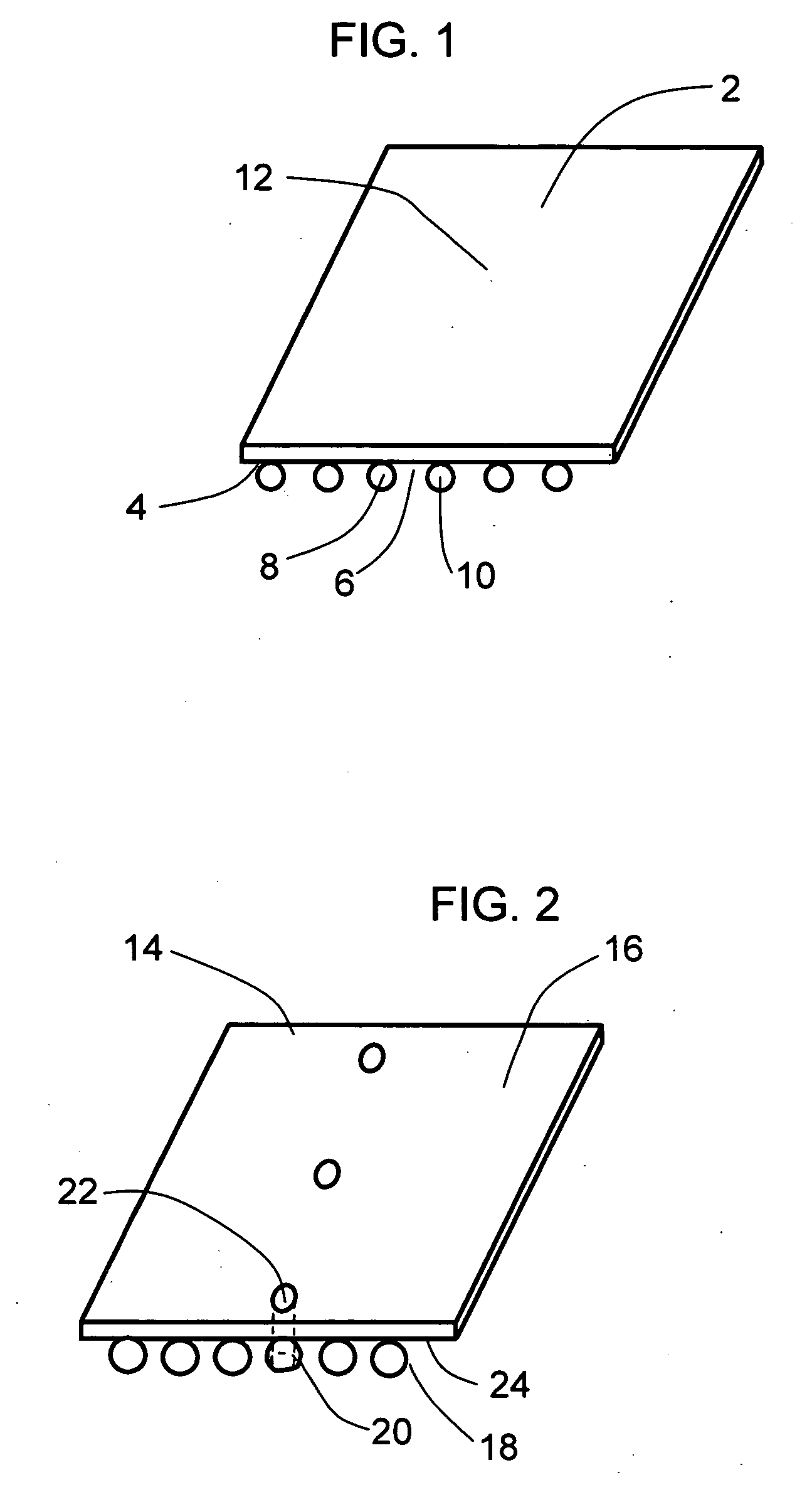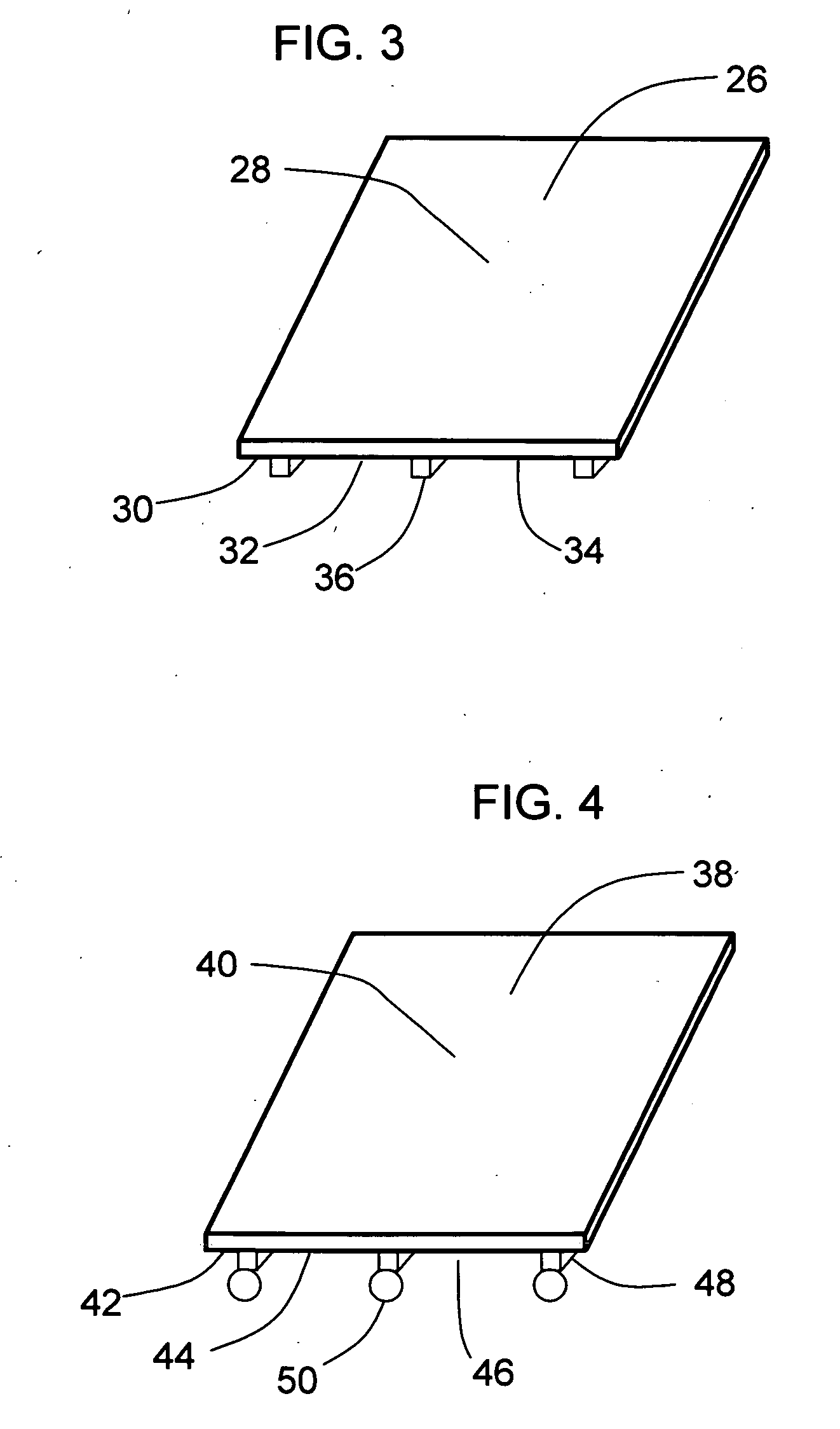This often results in buildings requiring significant heating and / or
air conditioning requirements.
The result is a building having high utility costs.
Furthermore many of today's buildings including the modern ones may not be very energy efficient.
Many buildings lack good insulation.
Some buildings having substantial insulation thickness may still have relatively poor insulating properties due to
moisture contamination and air leaks with the outside environment.
For example, certain natural disasters such as hurricanes may inflict substantial
wind damage to standard rectangular buildings.
From an
engineering standpoint there is no logical reason why more buildings are not constructed as geodesic domes.
Individuals may find the geodesic dome to be somewhat ugly and therefore prefer the less efficient but better looking rectangular shaped architecture.
Swamp coolers add substantial
humidity to the air so they are only effective in dry
arid regions.
For example,
sunlight may fall onto a dark roof surface and heat the
attic space underneath.
This
infrared light does not add to the lighting of rooms but rather poses an extra burden of heat to the interior of the building that must be removed by air conditioning systems during periods of
hot weather.
Unfortunately, these heavy clay tiles place added weight burden on the structure, may create a hazardous condition during earthquakes, have limited insulating properties, and are only partially effective at keeping heat out of structures such as houses.
While being somewhat effective in holding them together on to roofing surfaces there is a tendency for them to come loose during high wind conditions.
While being somewhat effective in holding them together on to roofing surfaces there is a tendency for them to come loose during high wind conditions.
Many of these materials require significant time for them to harden.
For example, industrial or commercial applications where long
shut down times may be costly or disruptive.
Unfortunately, controlling the spacing between tiles and their attached substrates is less commonplace.
Difficulties may arise from the use of high
viscosity cement or other related materials used for tile bonding.
Many of these materials flow out with difficulty and therefore may form a layer of uneven thickness that may go unnoticed until after the
cement has set.
The use of
cement and other related materials to bond tiles to their substrates may result in poor anchorage.
Subsequent
exposure to harsh conditions such as temperature changes and
moisture may result in the
delamination of tiles from their attached substrates.
Difficulties associated with providing uniform tile surfaces and forming strong bonds between tiles and their substrates has lead to many of the above described innovations.
Generally speaking, roofing tiles are heavy, and do not provide a substantial amount of insulating properties to the outer roofing surfaces of buildings.
Furthermore, the bonding methods used for the attachment of roofing tiles do not possess good insulating qualities either.
A significant amount of heat may build up in the
attic spaces of buildings due to absorption of
solar energy by roofing surfaces.
This often results in shade that is somewhat dense.
Trees can grow to excessive size over time.
Growing trees send out roots that can tear up driveways and building foundations and may find their way into sewer lines clogging them up.
Certain trees such as pine trees are flammable and represent a
fire hazard when located close to certain buildings.
Trees often lose leaves that can clog rain catching roofing gutters and can be a nuisance to clean.
Unintentional shading of roofing surfaces is a common occurrence.
Unintentional shading may also occur when solar collectors and / or
electricity generating photovoltaic panels are placed directly above roofing surfaces.
This results in a vented cavity between the building surface and the barrier inner surface.
During periods of warm weather this
radiant energy can place an unwanted burden to air conditioning systems causing them to
overwork.
Unfortunately, this approach results in the consumption of excessive amounts of
electric power.
In this instance,
attic ventilation may have the undesirable effect of removing warm air from the building.
This is particularly troublesome owing to the fact that warm air rises and
cold air sinks.
Any leaks between the attic space or any other space directly under the roof of a building and living and / or working spaces located underneath represents a significant loss of heat.
This heat loss places an added burden to heating systems.
Unfortunately, burning wood in a
fireplace often results in only a small amount of heat being generated for living spaces and a relatively large amount of heat going up the
chimney.
Burning wood in a
fireplace can actually suck more heat out the
chimney than the fire produces.
A flu
damper adjustment is often provided to minimize this effect, but is only somewhat effective.
This results in numerous cold sunny days throughout the winter months.
In addition,
heat losses may occur when moving heat containing liquids and / or gasses through areas of lower temperature.
The capture and subsequent use of
solar heat has traditionally involved systems employing a significant amount of complication.
All in all this
system is relatively expensive, bulky, and cumbersome.
These solar heating systems usually deliver a limited amount of heat owing to their small size.
This tends to be the limit of utility for these traditional heating systems.
For example, during winter months in northern climates significant snowfall may occur onto roofing surfaces.
This snowfall may place a significant weight burden onto buildings.
This may be particularly troublesome for buildings having flat horizontal roofing surfaces.
 Login to View More
Login to View More  Login to View More
Login to View More 


